The OnePlus One Review
by Joshua Ho on November 19, 2014 8:00 AM EST- Posted in
- Smartphones
- Android
- Mobile
- OnePlus
GPU Performance
As always, it's important to test the performance of the GPU in order to better understand how a device will perform in workloads such as 3D gaming and similar situations. In the case of the OnePlus One and its Snapdragon 801 SoC, we're looking at an Adreno 330 GPU clocked at 578 MHz. While this is a known quantity by this point, it's still worth going over simply to verify that performance is in line with what we expect from this setup.
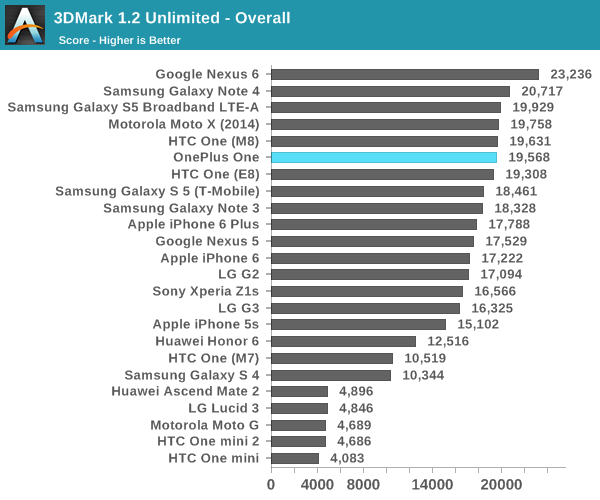
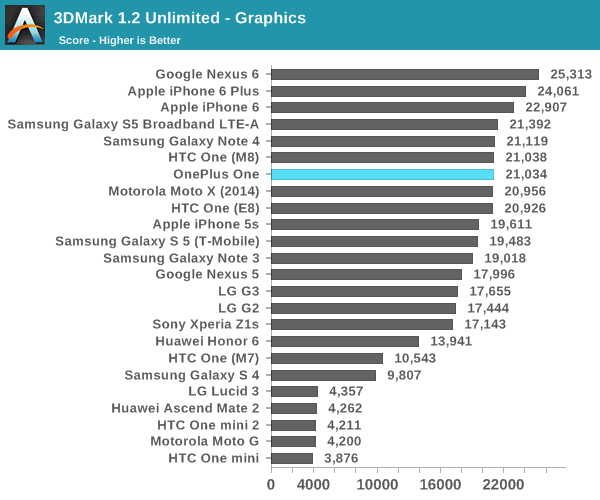
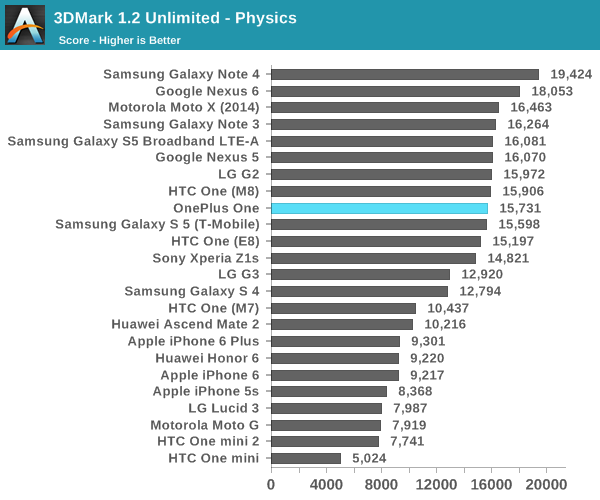
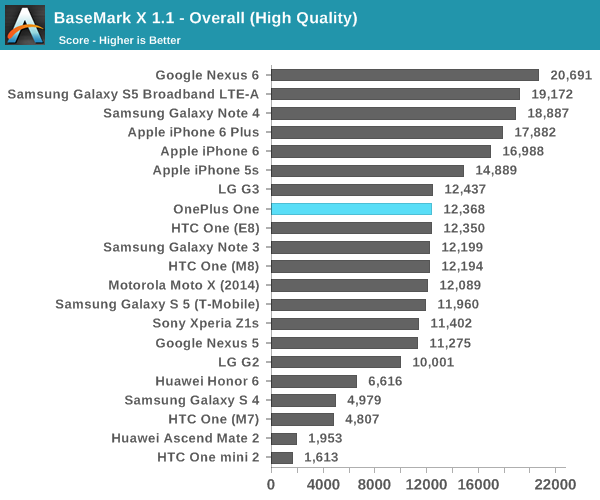
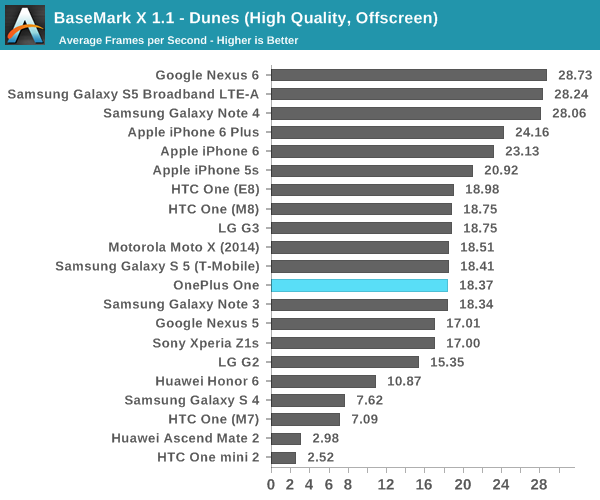
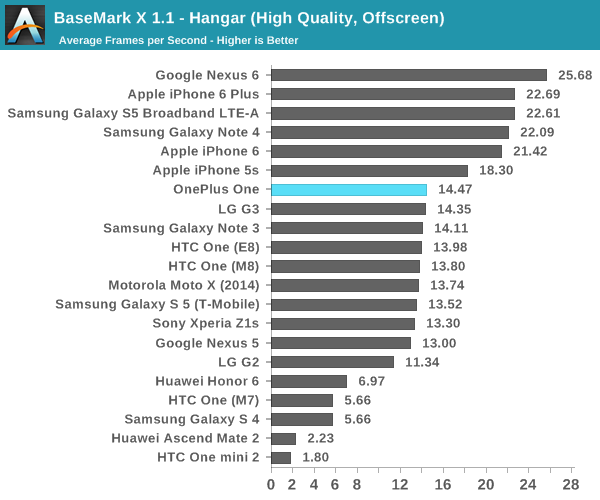
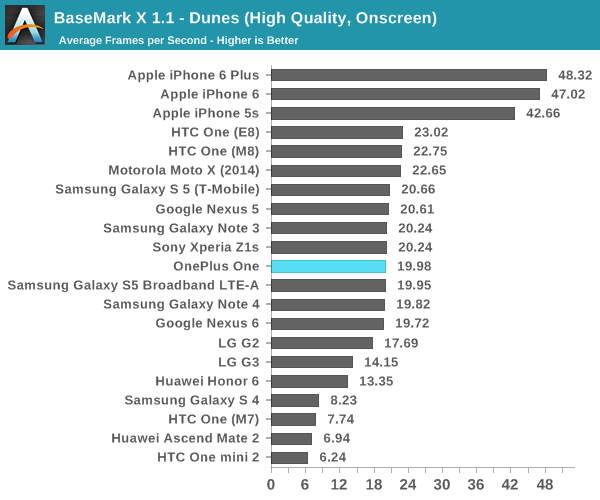
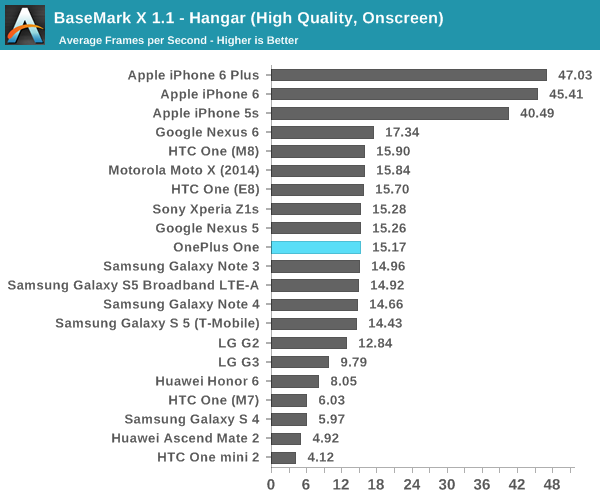
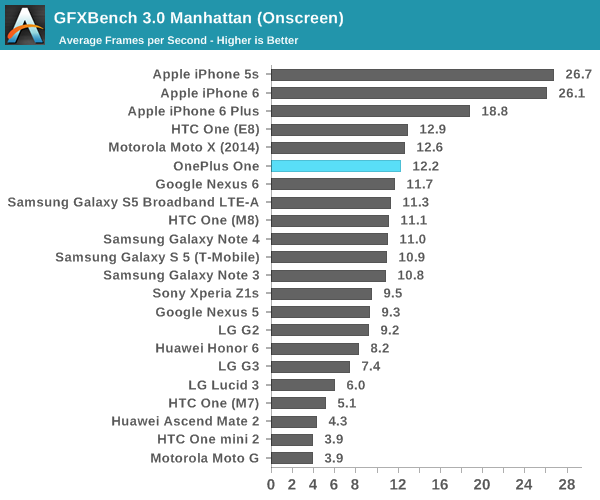

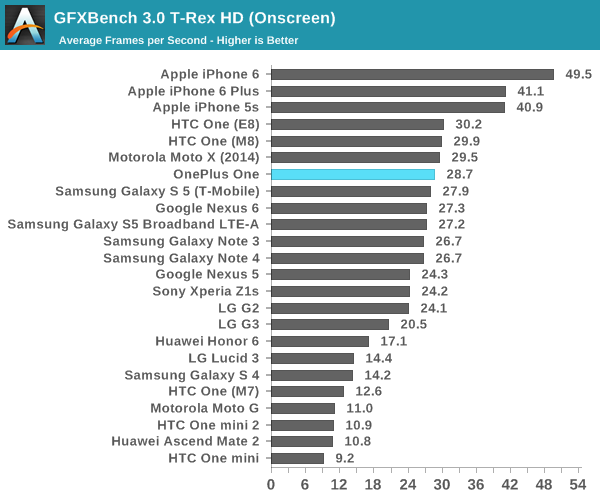
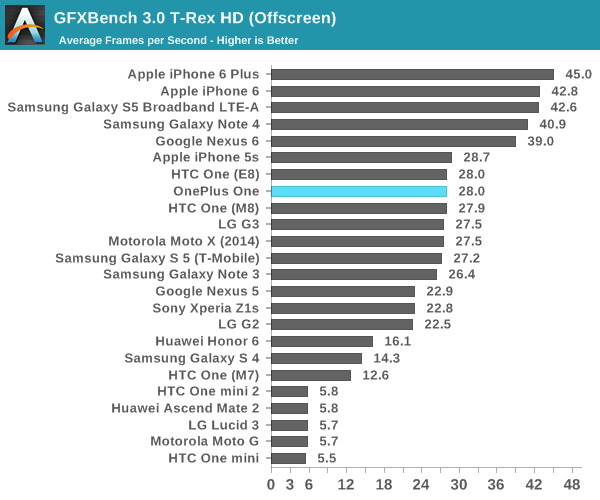
As one might be able to guess, the OnePlus One's graphics performance is where we expect it to be. At this point in the device lifecycle, the OnePlus One ends up behind the latest and greatest, but performance is more than acceptable as most of the GPU performance gains are spent on driving higher resolutions instead of better performance.
NAND Performance
In truth, storage performance tends to fall to the background on the long list of things that affect user experience. However, while it takes large improvements for a user to notice faster storage, poor storage performance is extremely obvious and painful to live with. To test this, we use Androbench with some custom settings to reduce variability in results. While Androbench seems to be an invalid test on Android 5.0, on Android 4.4 the test continues to work well for its purpose so we can disclose these results.
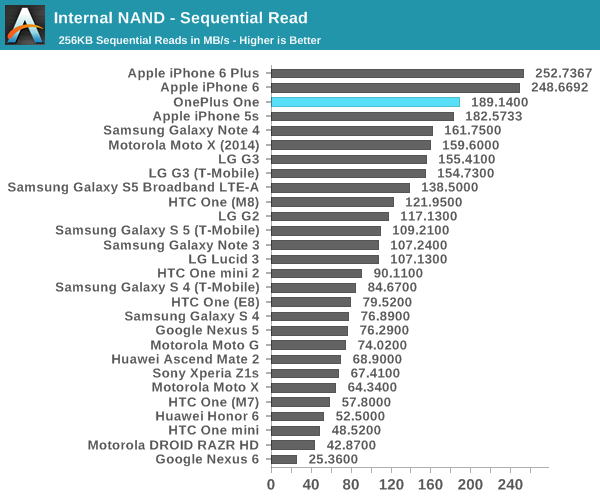
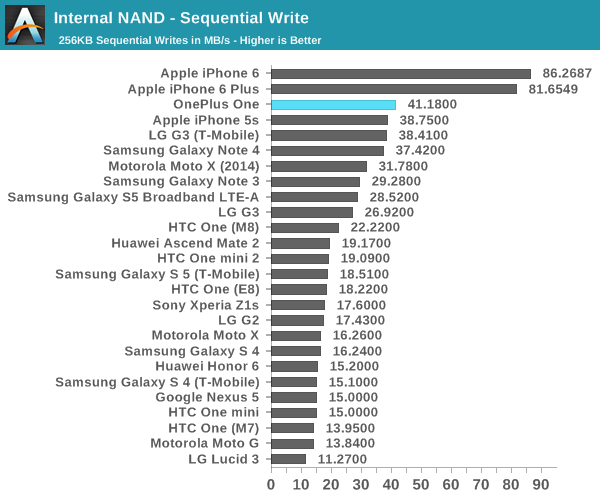
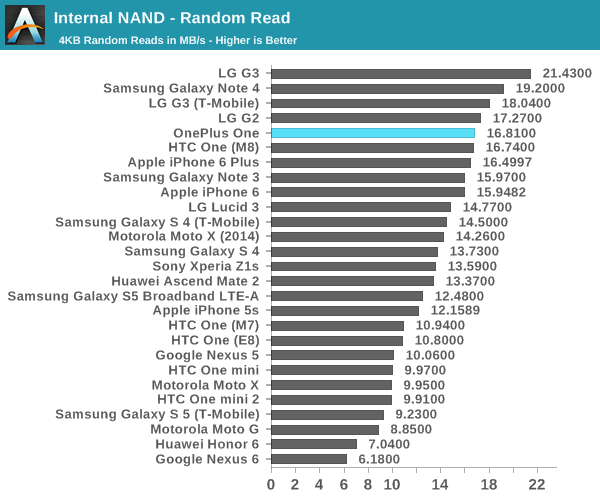
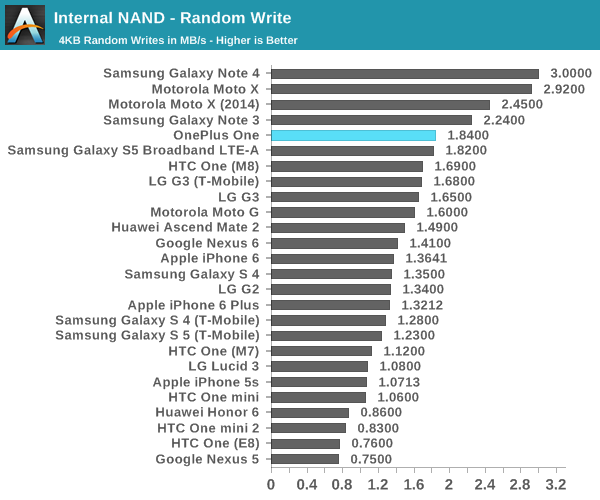
In this test, it's clear that OnePlus has kitted out the One with some extremely high-quality NAND (which appears to be a Toshiba solution) , but random I/O isn't quite as impressive. This may be due to the controller used. At any rate, one shouldn't have any problems with lag resulting from poor storage performance as the eMMC used in this device is incredibly high-end for a device of this price.










148 Comments
View All Comments
MadDuffy - Wednesday, November 19, 2014 - link
Thanks for your review.Some corrections on page one specs: MHL not supported and BT 4.0 (not 4.1).
anneoneamouse - Wednesday, November 19, 2014 - link
"Reception, at least for T-Mobile US' band 4/AWS LTE is noticeably worse than most devices that I've tried."This would seem to be a significant issue; yet this one-line detail is buried under the "misc" section, and not discussed in the conclusions at all. Three pages are devoted to analysis and discussion of photo / video quality, which for most users are likely to be secondary functions.
It's a phone; can I use it to speak clearly to a client? If not, I'll look elsewhere.
AoN.
DoktorSleepless - Wednesday, November 19, 2014 - link
Yes, this needs some serious elaboration.Cinnabuns - Wednesday, November 19, 2014 - link
I agree. Especially with all the praise and in-depth look given to the Moto X's cellular reception on this site, it would be helpful if all phones reviewed had a small section describing its reception characteristics.Harry_Wild - Thursday, November 20, 2014 - link
As a T-Mobile customer; this reception quality is top priority for picking a phone! LTE is for most data until T-Mobile changes it to Voice over Internet using LTE band. But that will be in middle 2015 and later.It not a hardware problem; it a software problem so One Plus should be able to fix it with T-Mobile's assistance.
Conficio - Friday, November 21, 2014 - link
@Harry, how come you are sure this is a software issue. Could be bad placement of the antenna or bad antenna design in general. Also, I think we don't know if the issue is limited to T-Mobile. That was just the network he tested it on.You make a good point though, if this is an LTE issue (which the article does not say), then in 2015 this phone on T-Mobile goes from good voice and bad data to issues for both.
More questions: There were software updates mentioned. Did those affect the reception issues? And did they swap out the baseband?
Conficio - Friday, November 21, 2014 - link
That also made me really nervous. I'm a T-Mobile customer and really need to know how he did notice this. I have seen some good cellular comparison tests in the past on Anandtech. Please lets get some objective comparison or at least some more detail on how this does effect the phone? Indoors, outdoors, calls dropped or not starting, get no reception where other phones have reception. Any reaction by the company?Munna2002 - Friday, November 21, 2014 - link
I am a T-Mobile customer with an OPO. My family also all use OPOs. We have no problems with LTE speeds in the NYC Metro area, although we do not have the T-Mobile Wifi calling app, which requires messing with the bootloader and kernels from what I understand.jmasterj - Wednesday, November 19, 2014 - link
This review is missing an important section that always appeared in Klug's phone reviews: network performance. There's one anecdote about how it performed on T-Mobile's LTE, but nowhere are listed even the HSPA or LTE bands supported by this device. It would be nice to see testing in this area.pjcamp - Wednesday, November 19, 2014 - link
Since you took the time to review this vaporphone, perhaps you could also do the Xperia Z3?